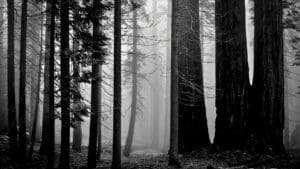Top 5 Survival Tools Every Backcountry Explorer Should Carry
In the backcountry, your gear is more than just equipment — it’s your lifeline. When you’re miles from the nearest road, past the last cell signal, and surrounded by nothing but wild terrain and raw weather, the tools you carry can mean the difference between comfort and catastrophe.
At WildFront Adventure Co., we don’t believe in gimmicks or gear fads. We believe in rugged reliability, timeless knowledge, and tools that have earned their place in the packs of trappers, guides, and explorers for generations. Whether you’re on a solo snowshoe trek in the Rockies, paddling deep into boreal lakes, or navigating alpine ridgelines, there are five tools no wilderness explorer should ever leave behind.
Let’s break down the essential survival gear every backcountry adventurer should carry — not just the what, but the why, the how, and the story behind each one.
1. Fixed-Blade Knife: The Backbone of Survival
Ask any seasoned survivalist or bushcrafter what the most important tool is in the wilderness, and most will answer the same: a reliable, fixed-blade knife. It’s not just a blade — it’s a carving tool, a firestarter, a hunting aid, a pry bar, and sometimes even a lifesaver.
Look for a knife with a full tang — meaning the metal of the blade extends through the handle — for maximum strength. Carbon steel blades take a sharper edge and can throw sparks from a ferro rod, though stainless steel resists rust better in wet conditions. Your knife should feel balanced in your hand and strong enough to baton wood, skin game, and craft everything from feather sticks to fishing spears.
Pro Tip: Avoid folders and gimmicky survival knives with hollow handles or built-in compasses. Simplicity and durability win every time in the bush.
Why It Matters: In a real survival situation, your knife becomes your most versatile tool. It can shape your shelter, process kindling, gut a fish, or even provide first aid. It’s the one tool that earns its keep every single day in the wild.
WildFront Recommends: Look for blades forged in Canada or Scandinavia — regions where traditional craftsmanship meets brutal wilderness testing.
2. Ferrocerium Rod: Fire, Anywhere, Anytime
Modern firestarting tools like lighters and matches are great — until they get wet, freeze, or run out of fuel. A ferrocerium rod, often called a “ferro rod” or “fire steel,” is the ultimate old-school, fail-safe firestarter. With a proper striker and technique, it will throw molten sparks at over 3,000°F, capable of igniting dry tinder even in wet or windy conditions.
Ferro rods work in any weather, never run out of fuel, and last for thousands of strikes. Pair one with natural tinder like birch bark, cedar shavings, or cotton balls soaked in petroleum jelly, and you’ve got fire whenever you need it. It’s a skill worth practicing — and once you’ve mastered it, you’ll wonder why you ever relied on disposable lighters.
Pro Tip: Scrape off the black coating on a new ferro rod before using it. Strike close to your tinder pile and cup your hand to block the wind. Angle and pressure matter — practice at home before you need it in the wild.
Why It Matters: Fire is warmth, light, cooking, water purification, morale, and survival signaling. It’s one of the most primal tools we’ve ever known — and being able to create it from scratch is both empowering and essential.
Field Note: Our founder, AJ Cote, once rode out a surprise cold snap in the mountains with nothing but a tarp, a ferro rod, and a pocket knife. The fire he built that night wasn’t just comfort — it was life.
3. Emergency Shelter: Your First Line of Defense
The wilderness is beautiful — but it doesn’t care about your plans. Storms blow in fast. Temperatures drop without warning. You might twist an ankle and be forced to bivouac overnight. Having a lightweight emergency shelter can mean the difference between an uncomfortable night and hypothermia.
Your emergency shelter could be a durable mylar bivvy sack, a compact tarp, or even a heavy-duty space blanket. The key is portability, ease of deployment, and insulation from the ground and wind. In survival situations, the first priority is not food or even fire — it’s protecting your body from exposure.
Pro Tip: Practice setting up your shelter in different environments and conditions. Trees, terrain, and time of day all affect where and how you pitch it. A tarp with multiple grommet points gives you flexibility for rain flies, lean-tos, or windbreaks.
Why It Matters: In cold or wet climates like the Canadian Rockies or boreal forests, exposure can kill faster than dehydration or hunger. A good shelter conserves your body heat and buys you time — to think, to plan, and to survive.
4. Water Filtration System: Life in Every Drop
Crystal-clear mountain streams may look clean, but they can still harbor microscopic threats like giardia, cryptosporidium, or harmful bacteria. In any backcountry situation, clean water isn’t a luxury — it’s a necessity.
We recommend carrying a compact, mechanical filter (like a straw-style or gravity-fed system), plus a backup method such as iodine tablets or a metal container for boiling. Having multiple purification options ensures redundancy. If one fails, you still have access to clean water — and clean water means energy, focus, and survival.
Pro Tip: In winter conditions, avoid filters that can freeze (which ruins the membrane). In that case, purification tablets or boiling become the safer bet.
Why It Matters: Dehydration sets in faster than most people think, especially at high altitudes or in dry climates. Losing just 2% of your body water can impact cognitive function and decision-making — which is exactly when you need clarity most.
Traditional Wisdom: Métis fur traders would boil pine needle tea not just for hydration, but for its vitamin C — a crucial ingredient in long-term wilderness survival.
5. Multi-Use Cordage: 550 Paracord and Beyond
If duct tape is the king of urban fix-alls, paracord is the crown prince of the bush. Originally developed for parachutes in WWII, 550 paracord is strong, flexible, and ridiculously versatile. It can hold hundreds of pounds, doesn’t rot easily, and packs down small.
In survival scenarios, cordage can serve a hundred functions: building shelters, setting traps, lashing tools, crafting snowshoes, securing tarps, replacing bootlaces, creating splints, or hauling gear. You can even unravel it to use the inner strands as fishing line, sewing thread, or emergency sutures.
Pro Tip: Wrap paracord around your knife sheath, trekking pole, or water bottle to save space and ensure it’s always accessible. Keep at least 25–50 feet in your pack at all times.
Why It Matters: Cordage is one of those things you don’t fully appreciate until you desperately need it. It amplifies your ability to improvise, adapt, and overcome the unexpected.
Bushcraft Challenge: Try spending 24 hours in the woods with just your knife and a coil of paracord. You’ll learn fast how invaluable it is — and how many uses you’ll discover along the way.
Honourable Mentions: More Tools Worth Carrying
- Headlamp: With backup batteries or a solar charger. Because when darkness falls, you need your hands free.
- Compass and Map: GPS fails. Batteries die. Traditional navigation always deserves a place in your kit.
- Signal Mirror and Whistle: Small, lightweight, and critical for search and rescue visibility.
- Duct Tape: A wrap around your water bottle or trekking pole can go a long way for field repairs.
That said, if you had to choose only five items to carry in a survival kit — these are the heavy hitters that consistently prove their worth in the field.
Final Thoughts: Carry Like Your Life Depends On It (Because It Might)
Survival gear isn’t about fear — it’s about freedom. With the right tools, you can go deeper into the wild, stay longer, and face the unexpected with confidence. These five tools — a strong knife, a dependable firestarter, an emergency shelter, clean water access, and versatile cordage — represent a minimalist’s dream and a survivalist’s reality.
At WildFront Adventure Co., we don’t just sell gear — we live it. From the teachings of Métis elders to modern backcountry best practices, our approach blends old-world wisdom with today’s rugged performance. Whether you’re a weekend camper or full-time bushcrafter, the wild demands respect — and rewards the well-prepared.
Stay sharp. Stay safe. And never stop learning from the land.








